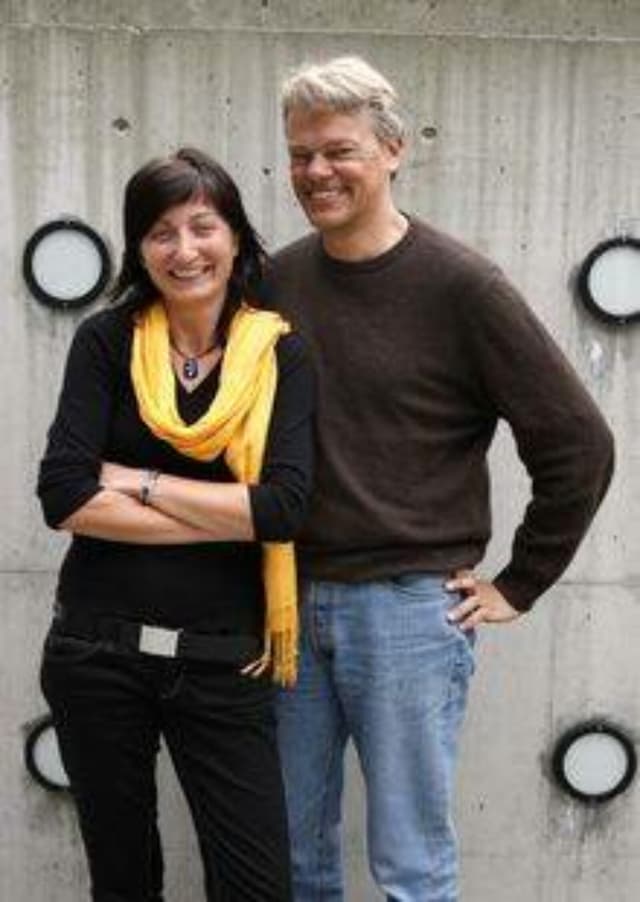European Research Council Supports NTNU Kavli Institute Research Into Higher Brain Functions

(Adapted from NTNU)
October 17, 2008
The Kavli Institute for Systems Neuroscience at the Norwegian University of Science and Technology has been awarded a grant of NOK 20 million (over 3 million US) from the European Research Council (ERC) – funds that will support research aimed at describing and explaining to the smallest detail how a so-called higher brain function works mechanistically.

The grant is provided through the ERC Advanced Investigator Grants. Researchers at the Kavli Institute at NTNU have already discovered the brain’s own GPS – a particular type of cell from which the sense of locality stems. They are now adopting gene technology in order to dig deeper and understand how advanced mental phenomena such as memory, sense of locality and decisions come into existence in the interaction between millions of nervous cells.
This is primarily a recognition of the fantastic work performed at the Kavli Institute,” says NTNU Rector Torbjørn Digernes. “Mr. and Mrs Moser have long been shining stars on the researcher sky. They are an inspiration for everyone else.
Said Institute director Edvard Moser, “The 20 million (NOK) is very welcome. This project brings Norwegian brain research another step forward. It is also a huge inspiration for basic research on the mechanistic basis for mental functions. It will bring us much closer to an understanding of how nervous cells produce mental functions, and in the long run contribute to the treatment of diseases attacking the brain.
It is well known that the experience-based functions in question are the result of interaction between thousands of nervous cells scattered in the brain, and millions of contact points between them; however, it has been impossible to study this through experiments as methods for stimulating selected cell types in the same brain area have been lacking. Now, new gene technology changes this situation. Harmless viruses can now be used like messengers to introduce an alien gene in a targeted way to the brain cells, which find the right cell type to complete the delivery. The cells absorb the gene and make it their own, producing the protein that can change a particular cell’s characteristics.
Once delivery is made, explains Moser, “The new genes placed inside the nervous cells are a bit like young cuckoos, which we know how to make sing or keep quiet. In this case, we know how to switch the genes on and off. That is the stroke of genius that enable us to study which cells do what inside our brains.
According to Moser, for their experiments with rats, the new genes can be switched on and off by adding certain chemicals to the rats’ drinking water. When the genes are switched on (no chemicals added), they produce proteins; when the genes are switched off (chemicals added), the protein production stops. The proteins are important for the cells to be able to send certain types of signals. By controlling how the signals are sent, scientists can control the activity in the cells they are studying and how they function.
The project uses the discovery of the brain’s sense of location as the starting point. Currently the research group in Trondheim has mapped many different types of cells that work together in networks, but they have only established how the different types work; not the function of the totality. With the new gene technology, they can begin to do this by first gaining exact knowledge about how the brain estimates where we are. The sense of locality is the first of the so-called higher cognitive abilities that we may be able to understand at a very basic level.
Moser notes this project is highly interdisciplinary. The core elements are neurophysiology and neuropsychology measuring signals from many nervous cells at the same time as rats find their way through labyrinths.
The European Research Council (ERC) has two programs for funding of top research. The first, introduced in 2007, is the ERC Starting Grants, that Norway received twice, both for the Kavli Institute. These grants provide substantial funding for new researchers so they can build up their own group.
The second program is the ERC Advanced Investigators Grants, awarded to internationally leading researchers who push forward research frontiers and contribute to scientific breakthroughs. The projects are typically innovative, path breaking and, while high-risk, have major scientific potential. The ERC Advanced Investigators Grant was awarded for the first time in 2008. In the category of Life Sciences, the Kavli Institute has again been selected to engage in contract negotiations.
A total of 78 winners of the Advanced Grants are European, of which two are Norwegian. European neuroscience projects were awarded a total of 10 grants.